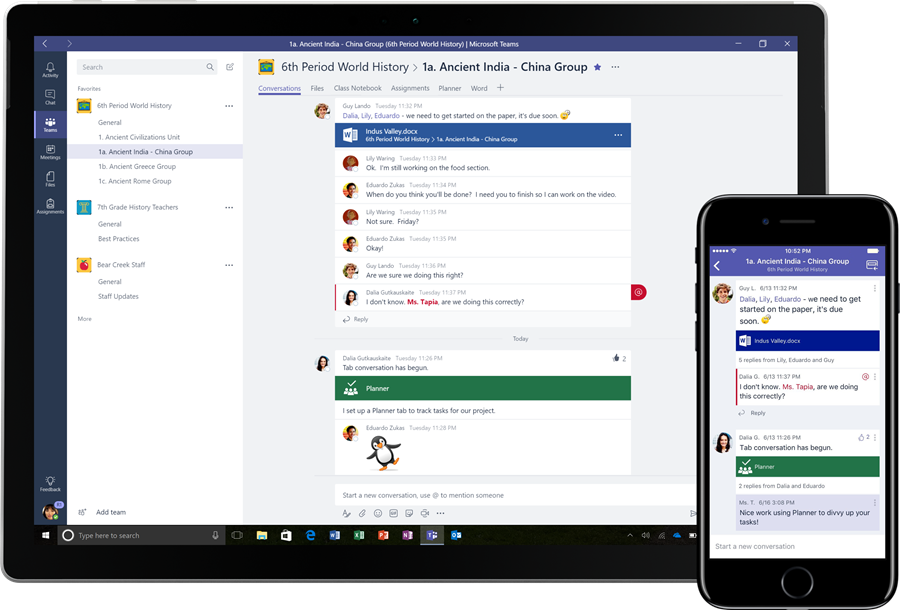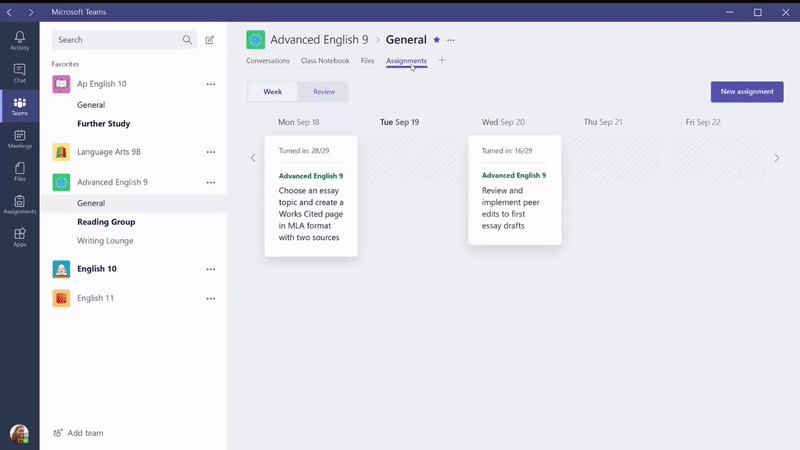Microsoft today updated Microsoft Teams with four classroom features “designed to help schools achieve more together.” The new functionality, previously limited to a select few in private preview, is now available to all Office 365 for Education customers worldwide (in 181 markets and 25 languages) across Windows desktops, Macs, Android, iOS, Windows Phone, and the web.
Microsoft Teams launched worldwide in March as part of Office 365, meaning it was only for businesses. A week later, the company made Teams available in Office 365 Education so faculty, staff, and students could also use the chat-based collaboration tool. The education improvements arriving today were first revealed last month — Microsoft Office general manager Catherine Boeger said at the time they would become generally available this summer, but stopped short of giving a specific release date.

They’re here now, accessible from a single hub in Office 365 for Education, and this is how Microsoft describes each one:
June 5th: The AI Audit in NYC
Join us next week in NYC to engage with top executive leaders, delving into strategies for auditing AI models to ensure fairness, optimal performance, and ethical compliance across diverse organizations. Secure your attendance for this exclusive invite-only event.
- School Data Sync automatically populates classes with student rosters connected to the school’s information system.
- OneNote Class Notebooks built into every class allow teachers to organize interactive lessons and deliver personalized learning right from Teams.
- Apps integrate into the classroom experience, so teachers can quickly access the Office 365 apps they already use — like Word, Excel, PowerPoint, and Planner — and customize their classroom with education apps.
- End-to-end assignment management in Teams enables teachers to move effortlessly from creation and distribution to grading and feedback in no time.
School Data Sync allows teachers to automatically load settings and projects whenever a new class starts, on their device and on devices their students pick up at the start of class. Classes come with their own OneNote notebook, so students can see what was shown five minutes ago or five days ago. Apps let teachers easily offer assessments, quizzes, and so on right in Teams. The teacher version of Teams allows users to create assignments, put a due date, and assign work to a class or subset of students, while the student version lets users complete and submit assignments.

Beyond these features, Teams is naturally all about chat, which Microsoft hopes will foster various types of discussions in and out of the classroom. The pitch to schools is simple: Teams is a collaboration system like the one used in companies. Similar to how teachers push Office, using Microsoft tools like Teams can not only make teaching easier, it can prepare students for the workplace where tools like this are already being used.
Teams lets teachers engage students in project-based learning with text, video, and voice using integrations like Microsoft Stream. Class themes, colors, emojis, stickers, and GIFs should all make sense for students who probably all have mobile devices. If discussions get out of hand, though, teachers have controls that let them delete posts, mute students, and pause class conversations.
Microsoft Teams also goes beyond classroom collaboration, allowing educators to share best practices in professional learning communities and staff to collaborate on school-wide initiatives. Groups of students, educators, and staff can also team up to coordinate activities, clubs, or organizations.
In just a few months, Microsoft has pushed out a slew of updates to Teams. It’s clear the company wants to get millions of people using the chat-based system, and yet it still has no plans to offer a free version for everyone.
